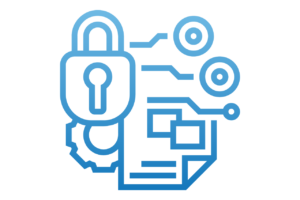Email is such an integral part of the internet that the history of email IS pretty much the history of the internet.
It goes all the way back to the mid-1960s. At that time email was between different users on the same big, multi-user, computer.
The first standards for sending emails between organisations appeared in 1973.
The things we take for granted now, didn’t all appear instantly.
Email ‘reader/writer’ programs started in 1975. Before that, it was really geeky direct commands and text editors.
The First spam mail arrives in 1978 (sent by a guy called Gary Thuerk, working for Digital Equipment Corporation)
Email clients, auto-replies and forwards arrive in 1979
1980 27 October saw ARPANET (the internet’s precursor) grind to a halt because of a ‘message-based virus’
1982 and the “internet” becomes a thing
1983 bring us DNS (thank you University of Wisconsin) and friendly domain names instead of numeric addresses
1986 MX records arrive, telling you where to send mail for a domain
1988 IRC (Internet Relay Chat) developed
1990 Tim Berners-Lee develops hypertext markup at CERN
1991 The World Wide Web arrives
1992 You can finally add an attachment to your email
Right now, there is a thought that email is in crisis.
Too many people spend too much time managing their mailbox and not doing actual real work.
We all get a load of emails, most of them pretty useless. We all complain about all the email we get and all the spam we get.
So beyond that, what’s wrong with email?
1. Emails are not secure – anyone who controls any part of the path between you and your recipient can read your mail.
2. Emails are not guaranteed to be sent or received – email gets lost or hung up in spam filters all the time.
3. Emails will not always tell you that they failed to send or be received
4. Emails are easy to forge – it’s trivial to claim to be someone else.
5. Emails are easy to tamper with – again, anyone who controls any part of the path between you and your recipient can change your mail.
6. Email is prone to mass unsolicited mail – spam.
And what’s good about email?
1. It works, most of the time. You can mitigate some of the problems above with some thought.
2. (Almost) everybody has an email address
3. (Almost) everybody knows how to use it
4. It’s inter-operable. Doesn’t matter if you have email through Google, Microsoft, run your own mail server, or enter email commands directly to someone else’s mail server. It all works.
5. Your emails are yours. You have the emails you’ve sent, and you have the emails you’ve received.
6. It’s asynchronous – you get sent an email, you choose when you read it. (not everyone seems to agree with this)
There are people out there forecasting the death of email and it’s replacement by a variety of services like Slack, WhatsApp, & Telegram.
We DO need a replacement for email.
It needs to be secure – people should not be able to snoop on our communications.It needs to be trustworthy – we need to know that the sender is who they say they are, and any recipient is who we think they should be.It needs to be tamper-proof – we need to know a message has not been altered.It needs to be acknowledgeable – we need to know that our messages have been received.It needs to be open and interoperable – any provider should not be able to demand that sender and receiver both use the same service.It needs to be archivable and searchable – If you receive a message today, you may need to access it in 5 years’ time.It needs to be sure that the message content is unambiguously yours, not possibly usable by some intermediate handler to train an AI.
It needs to address all email’s failings and keep the strong points.
It probably ought not be free, because if your business-critical communications are based on a free service, then:What recourse have you if/when the provider fails – whether temporarily or for good?How is your provider actually making money from your business?
Instant Message/Internet Relay Chat services are not going to fill email’s shoes without a bit of growth in what they provide and how they work, especially with increasing demand from GDPR and PECR requirements.
What can you do in the meantime?
Get your email domain properly configured with the right alphabet-soup acronyms – DNS, DKIM, DMARC, MX, & SPF recordsUse commercial grade email providers like Office 365. Free email is worth what you paid for it.Make sure your connection to the server is encrypted via HTTPSDon’t send confidential information in email. Get a secure shared portal and send links to documents requiring a separate signin (which will track downloads)Don’t send anything in email that you don’t want to risk going public.
If you have a question about your email set up, feel free to get in touch. You can call us on 03331 50 60 70 or send us a message.








